Montana is known as “Big Sky Country” for its wide open plains, where the blue sky seems to never end. The state is the third-largest in the continental U.S. and has a population of 1.123 million people as of 2022, but the elk, deer, and antelope populations are much higher. Montana has a diverse terrain with forests, lakes, and plains, making it the perfect place for adventure, with lots of places to camp, hike, and explore the great outdoors.
Montana got a lot of attention during the Great Migration West. When early prospectors found gold, floods of people flocked to the region, and many of the towns grew from mining and later, cattle ranching. Montana eventually became a state in 1889. If you are looking to learn more about the rich cultural history of the American West, then Montana should be your first stop. From museums to parks to historical monuments, Montana has it all.
To compile this list of 20 things Montana is known for, 24/7 Tempo consulted several travel websites, including Visit Montana, and the National Park Service. (For more fun facts about Montana, meet the 10 biggest musicians from Montana.)
1. Glacier National Park
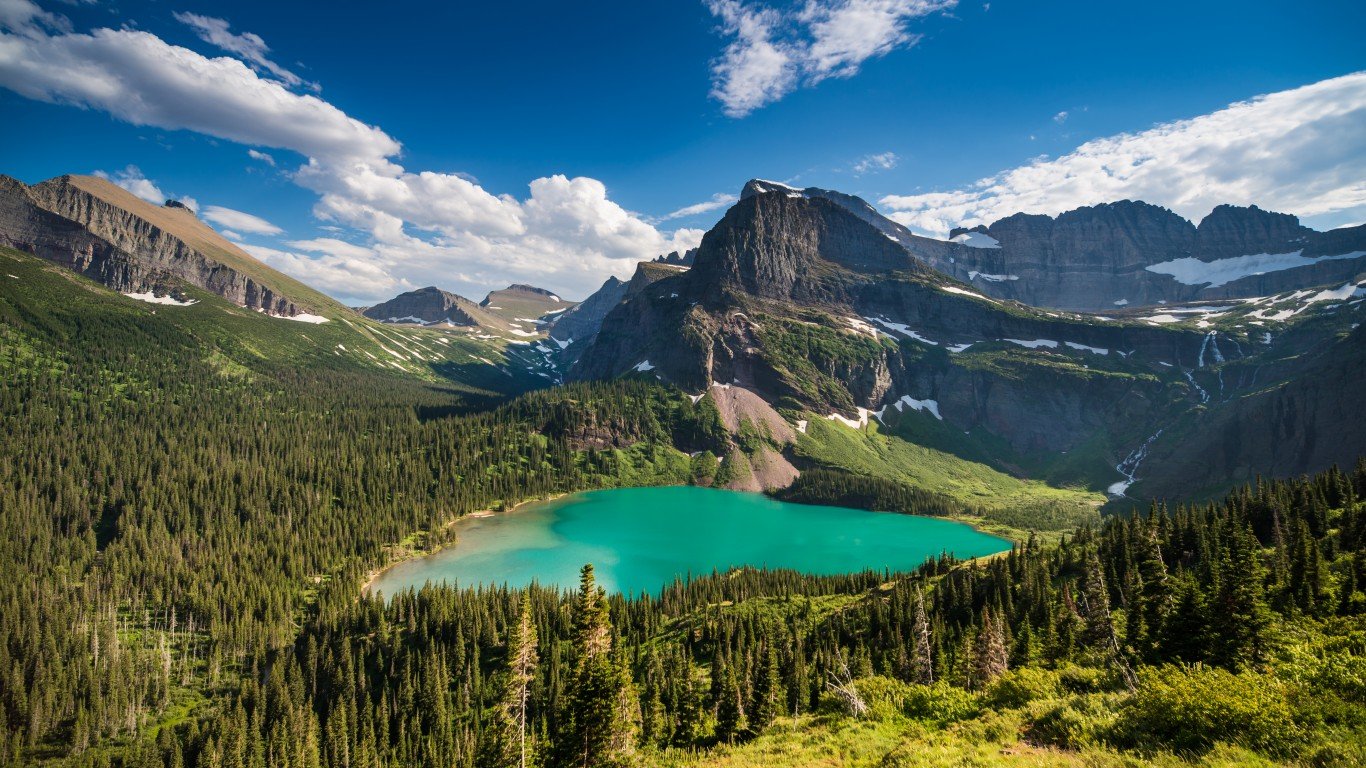
One of Montana’s biggest attractions, Glacier National Park covers 1 million acres and shares its northwestern border with Canada. The park sees visitors every year who come to hike, fish, and enjoy its diverse flora and fauna. The park has 130 lakes and is home to black bears, grizzlies, lynx, moose, mountain goats, bighorn sheep, wolves, and more.
When planning a visit to Montana, the beautiful Glacier National Park must be on your list. You will find an awe-inspiring landscape with snow-capped mountains and wide open plains. The indigenous tribes of the area originally inhabited the land, and every year, the park has a program called Native American Speaks, and members of the Blackfeet Nation and Confederated Salish and Kootenai Tribes teach visitors about the history of the land and the cultural significance of the area.
2. Bozeman
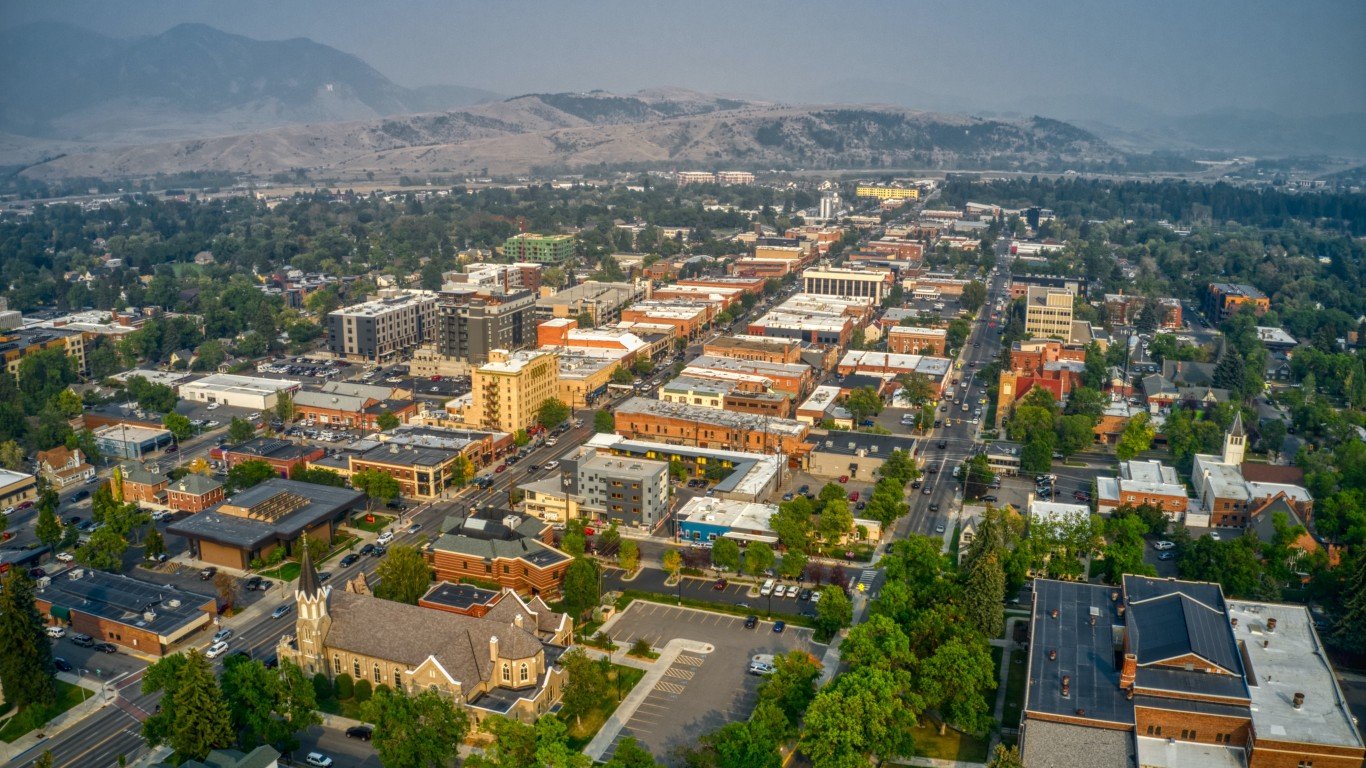
Bozeman is the fourth-largest city in Montana and has been growing each year. The city is located in southwest Montana and attracts people looking for an active outdoor lifestyle.
In 2010, Outside magazine ranked it the best city in the West for skiing. But there is more to do in Bozeman than just hit the slopes. There are plenty of outdoor activities like hiking, fishing, climbing, and camping. Plus, the city is home to the Montana State University Museum of the Rockies, where visitors can learn about the area’s first inhabitants, dinosaurs, at the Siebel Dinosaur Complex, which has a collection of T. rex items. The city is also home to the Montana Grizzly Encounter, a sanctuary for rescued grizzly bears.
3. Grizzly and Wolf Discovery Center
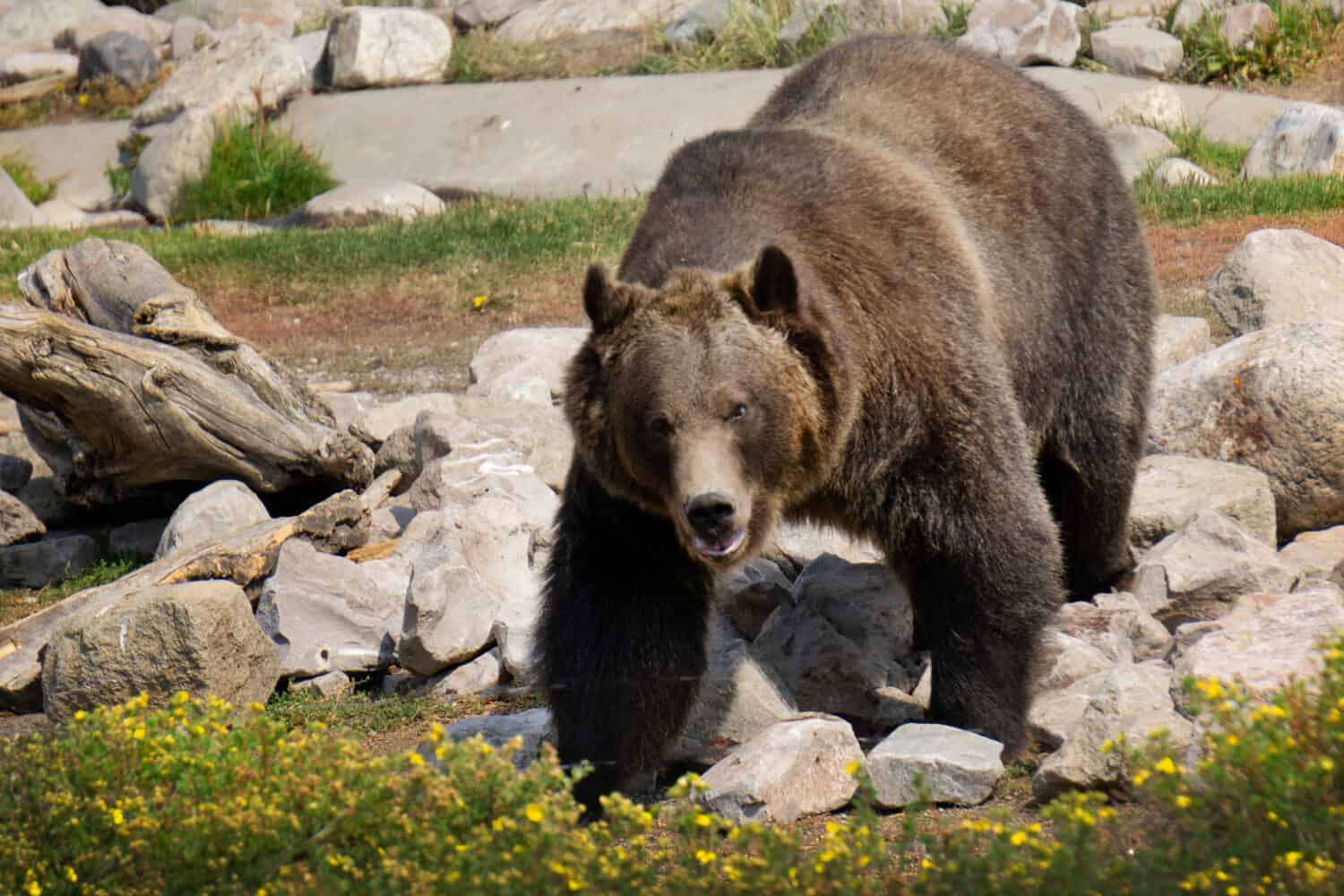
In southern Montana, where the Idaho and Wyoming border meet, is a town called West Yellowstone, and it is home to the Grizzly and Wolf Discovery Center. The center is a nonprofit wildlife park and education facility. Visitors can see grizzlies, black bears, wolves, birds of prey, and much more. This is a great place to bring the family and learn about animals and their habitat. It is open year-round and even has a bear cam and a wolf cam so visitors can peek in on the animals’ daily routine.
The center offers student center programs for spring break and summer activities. Plus, there are demonstrations about outdoor safety in bear country, information about bear spray, and other ways to stay safe. This is great for teaching youngsters about the importance of wildlife when visiting parks and campsites.
4. Plains
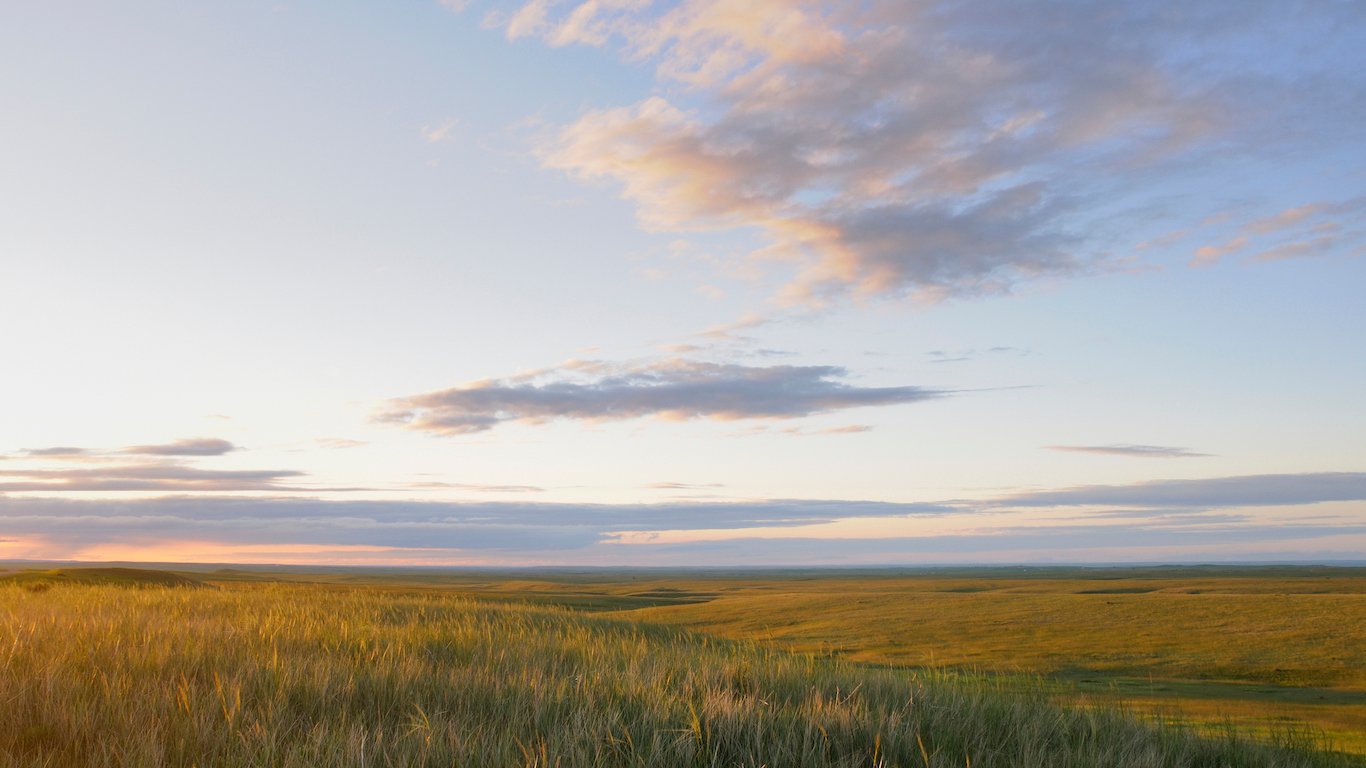
The Great Plains is one of the largest native grasslands in the United States. It runs east of the Rocky Mountains and includes the eastern part of Montana, Wyoming, North Dakota, and South Dakota.
The Great Plains is known for its abundance of wildlife and grassy lands, with steppes and prairie lands. This is where the American bison roamed, and the Great Plains Indians called home. The area is an impressive piece of living history. You can visit Fort Belkan Buffalo Reserve to learn more about the two Native American tribes, the A’aninin and the Nakoda, who call the place home.
5. Fly fishing
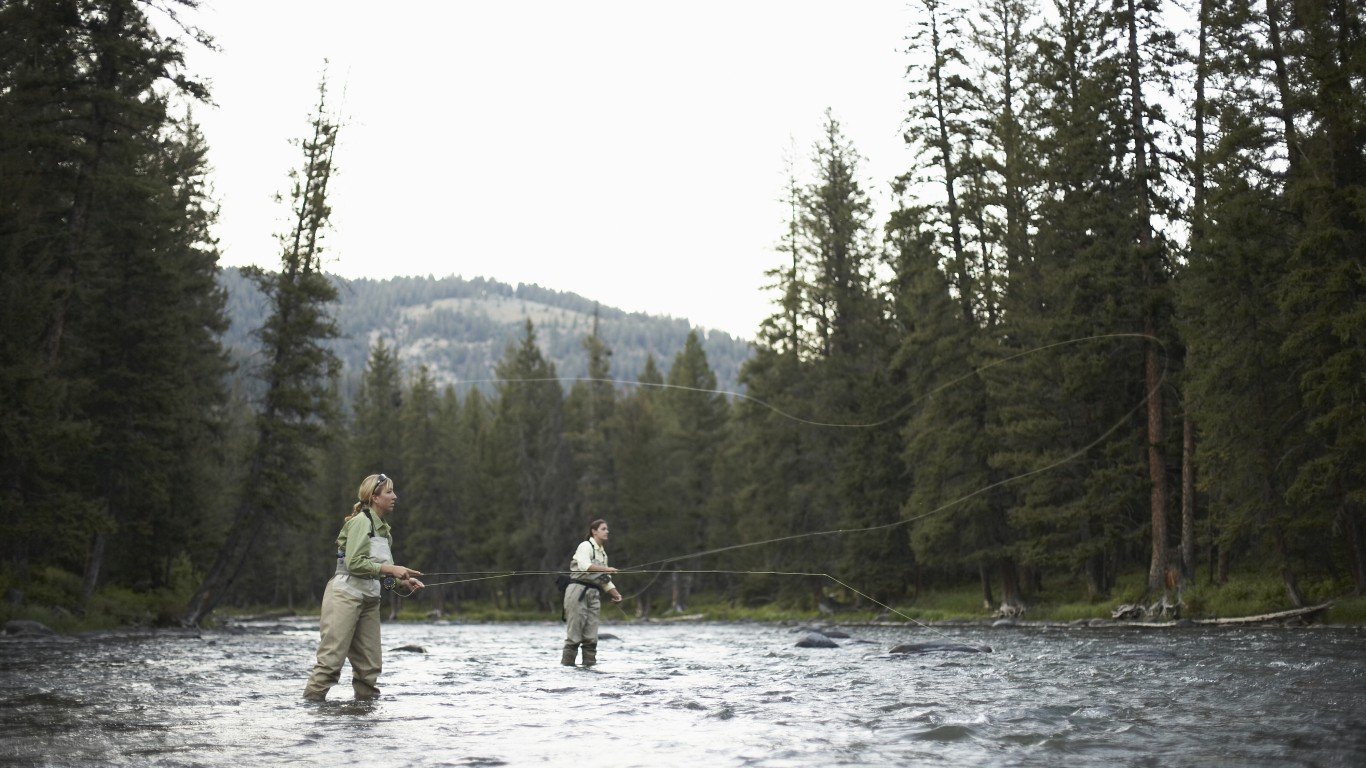
Montana is known for some of the best fly fishing in the U.S. Fly fishing is so good in Montana that Hollywood made a movie, “A River Runs Through It,” with actor Brad Pitt, celebrating the sport. The fishing scenes were filmed on Montana’s Gallatin River, but there are many other places throughout the state to fly fish.
Experienced fly fishermen come from all over for the chance to fish in Montana. For newbies who want to learn, there are plenty of places that offer guided trips and teach the art of fly fishing.
6. Flathead Lake
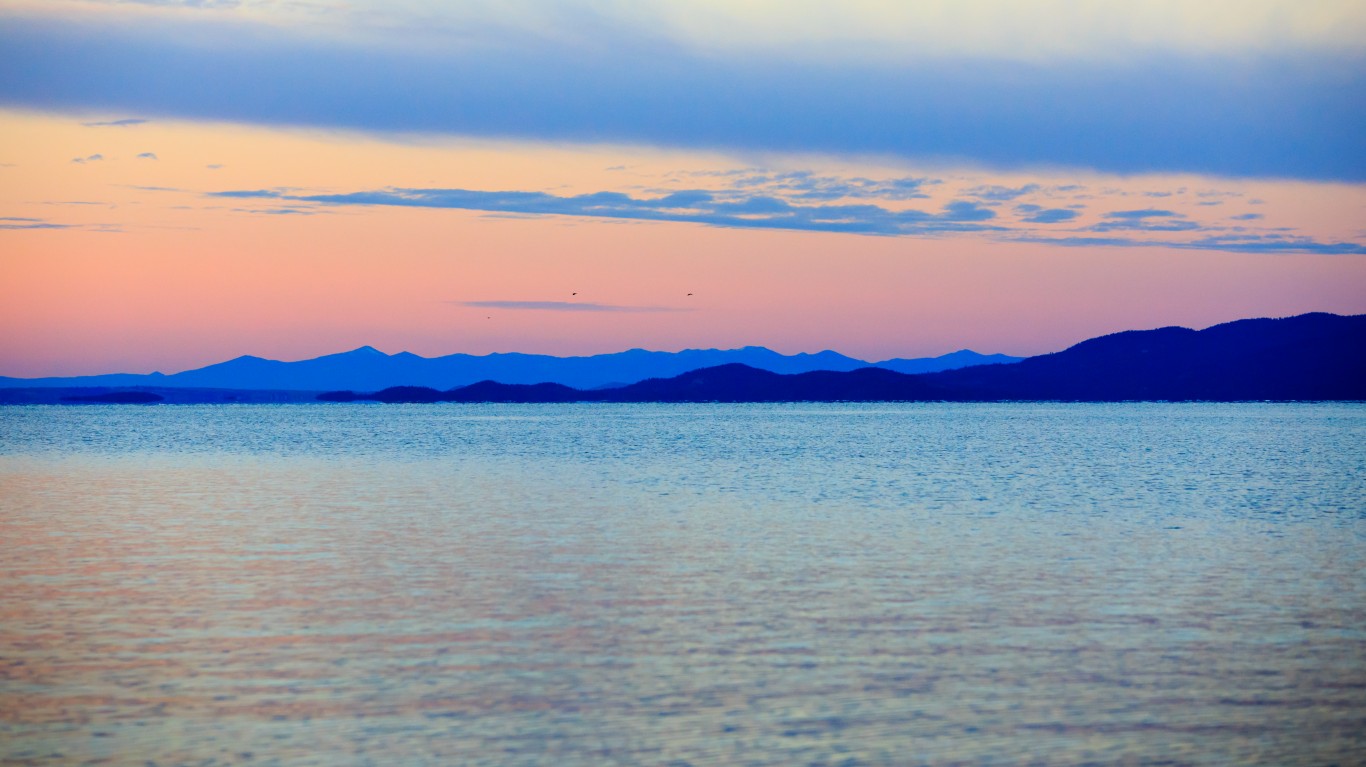
When you visit Montana, you must see Flathead Lake, the largest natural lake in the western United States and one of the cleanest lakes in the world. Flathead Lake has over 200 square miles of water and 185 miles of shoreline. Visitors come to experience the lake’s beauty, and camp, hike, swim, fish, kayak, and paddleboard.
The pristine lake is part of the Confederated Salish and Kootenai Tribes Flathead Reservation. Visitors need to purchase a tribal recreation permit.
7. Thompson Chain of Lakes State Park
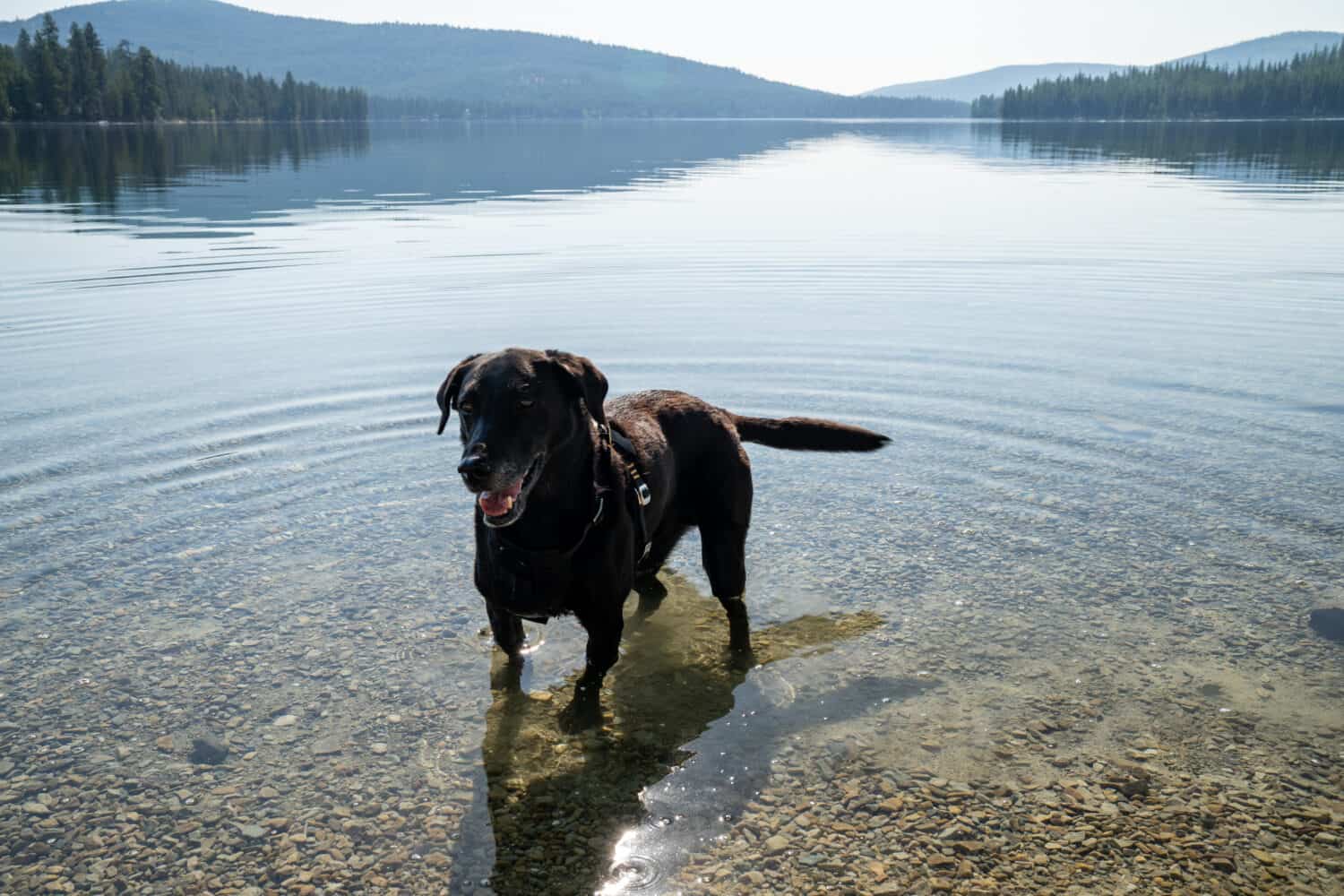
The majestic Thompson Chain of Lakes State Park is in northwestern Montana. The 3,000-acre park is over 20 miles along Highway 2, which stretches between Kalispell and Libby.
With 18 lakes to explore, visitors can enjoy water sports like fishing, swimming, boating, and more on McGregor Lake, Little McGregor Lake, Loon Lake, Lower Thompson Lake, Middle Thompson Lake, Upper Thompson Lake, and Horseshoe Lake.
8. Flathead cherries
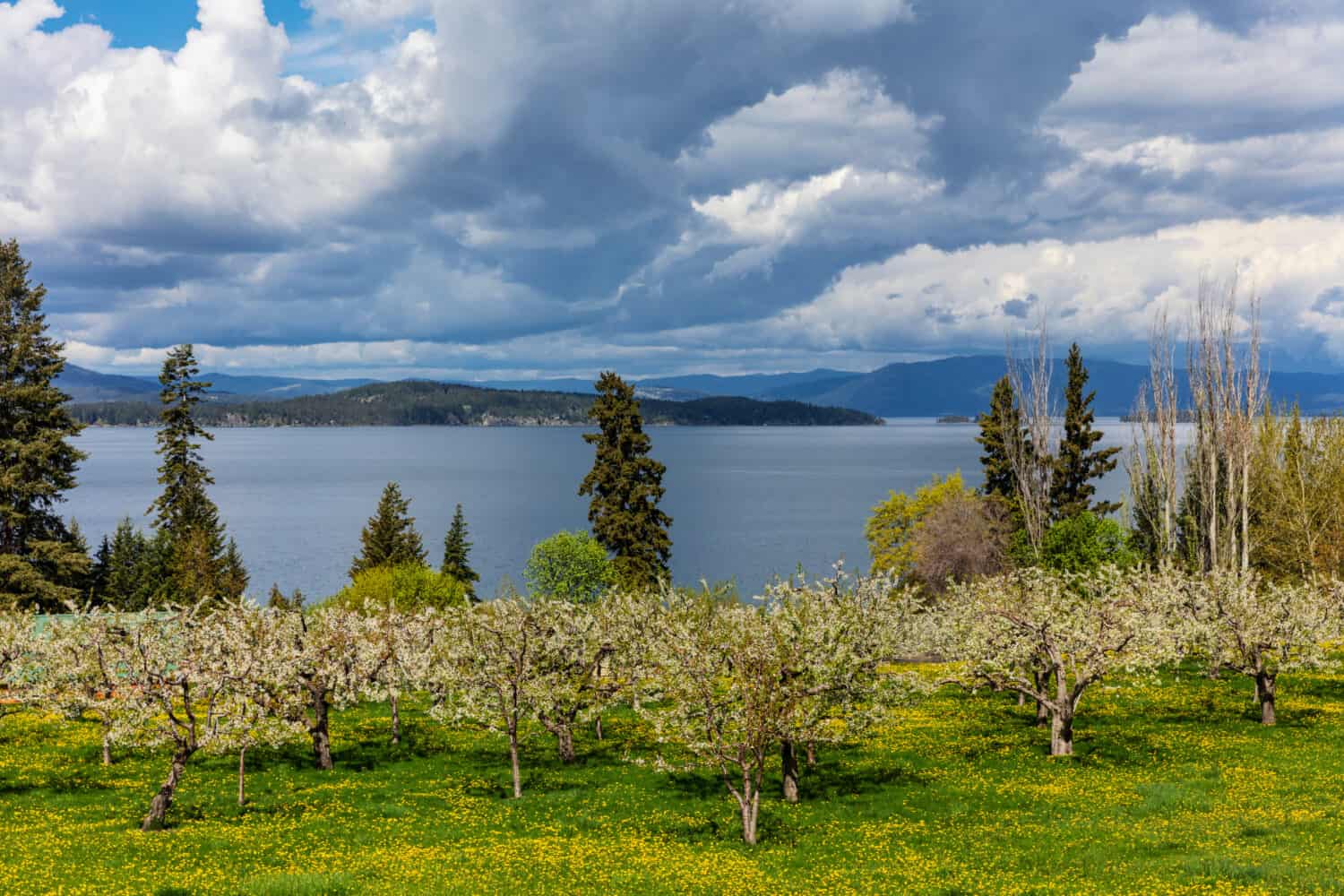
While not originally native to Montana, flathead cherries are now considered a Montana delicacy. These cherries are grown along Flathead Lake Valley and are considered some of the best, partly due to the mild climate and partly due to the clean glacier water.
One interesting thing about flathead cherries is that they aren’t a distinct type of cherry; instead, several varieties are grown in the Flathead Lake region. The cherries are so popular that there is an annual Flathead Cherry Festival in late July, right at the height of the cherry season. It’s a great place to try fresh cherries and a lot of tasty cherry items like ice cream, syrups, jam, and jellies.
9. Ranches
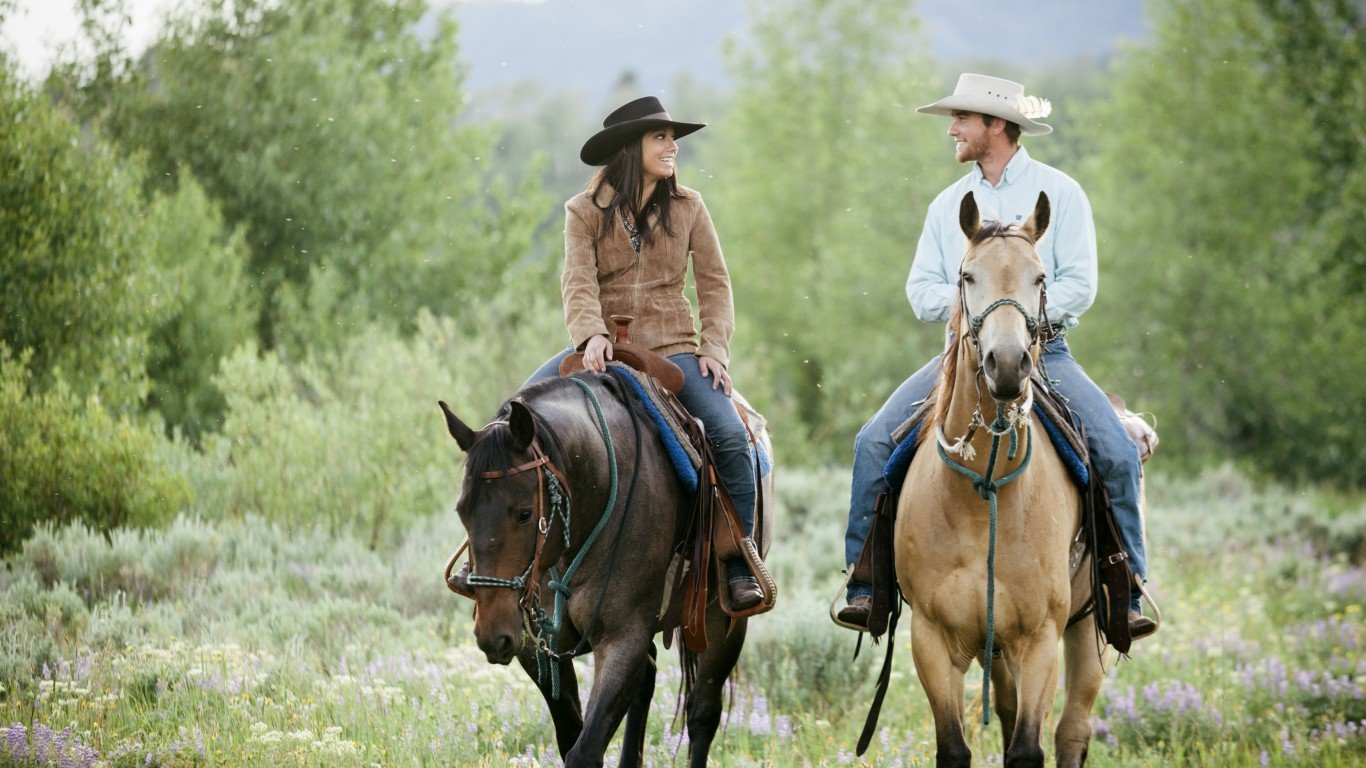
Montana is known for cattle ranching and the rancher lifestyle. The state is home to plenty of ranches, which invite visitors to experience ranch life. You can choose from rustic dude ranches to a more luxury-style ranch and everything in between. Ranches are a great place for a family vacation. They have lots of outdoor activities and skill-building exercises. They make a great place to unwind and get back to nature while getting to play cowboy.
Explore the various ranch experiences available throughout the state to find the perfect one for you and your family.
10. Rocky Mountain oysters
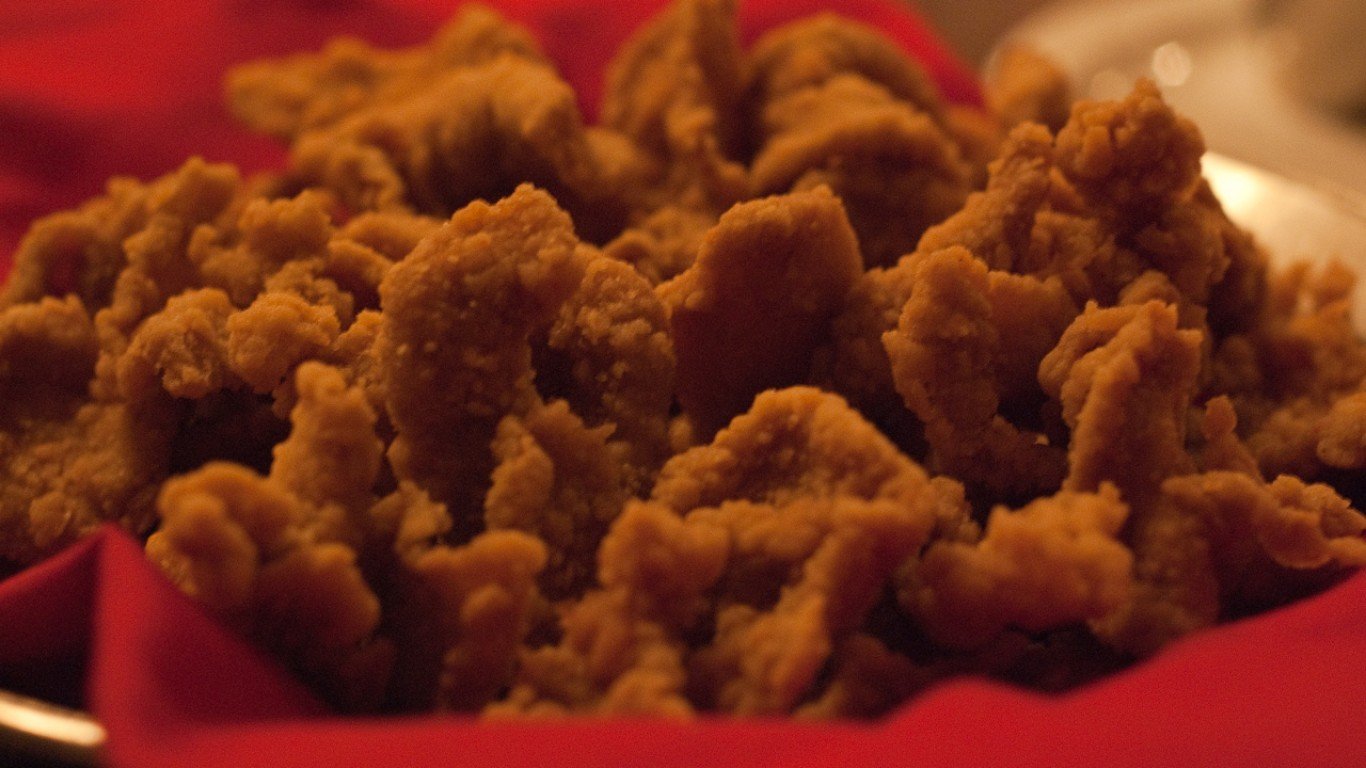
Battered and fried, Rocky Mountain oysters (animal testicles) are celebrated throughout Montana. There are several festivals dedicated to the mountain delicacy. The biggest one at Rock Creek Lodge was so rowdy it became unsafe, and after 35 years, the five-day festival that happened every summer had its last Testy Fest. The festival was five days of drunken debauchery and resulted in injury and even death. But other festivals are tamer and more dedicated to Montana food, like the one in Bozeman hosted by the Montana State University.
11. Snow skiing
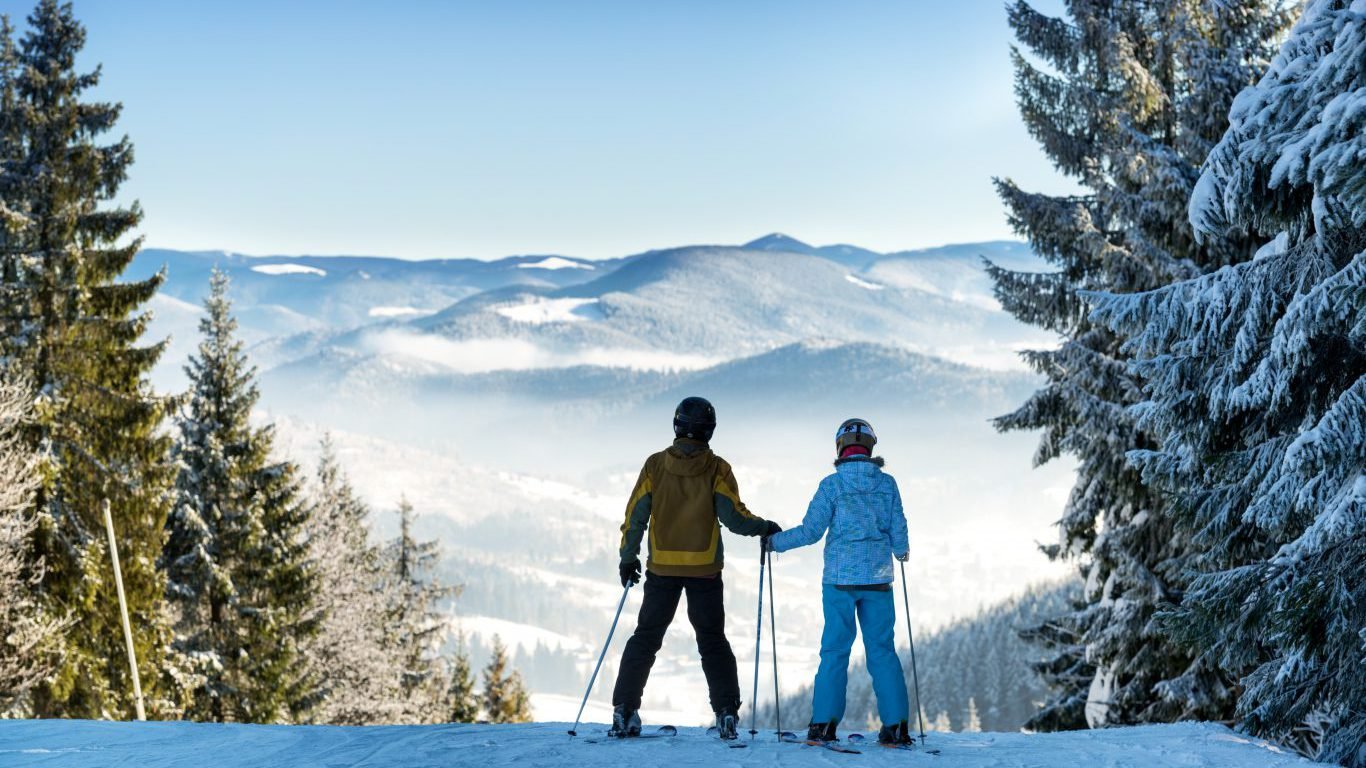
From the east to the west, all across Montana, there are plenty of places to enjoy snow skiing. Whether you are a downhill daredevil or prefer the milder bunny slopes, the state has a ski slope for your skill level.
For those who prefer the tranquility and endurance of cross-country skiing, there is no shortage of places to strap on your skis and explore the great outdoors.
12. Yogo sapphires

Blue Yogo sapphires are mined in Yogo Gulchin in the heart of the state of Montana in Judith Basin County. These cornflower blue gems were an accidental find as prospectors were originally looking for gold and didn’t pay much attention to these little blue pebbles.
These rare sapphires were discovered in 1895 and are only found in western Montana. In 1967, they became the state gem.
13. Great Falls
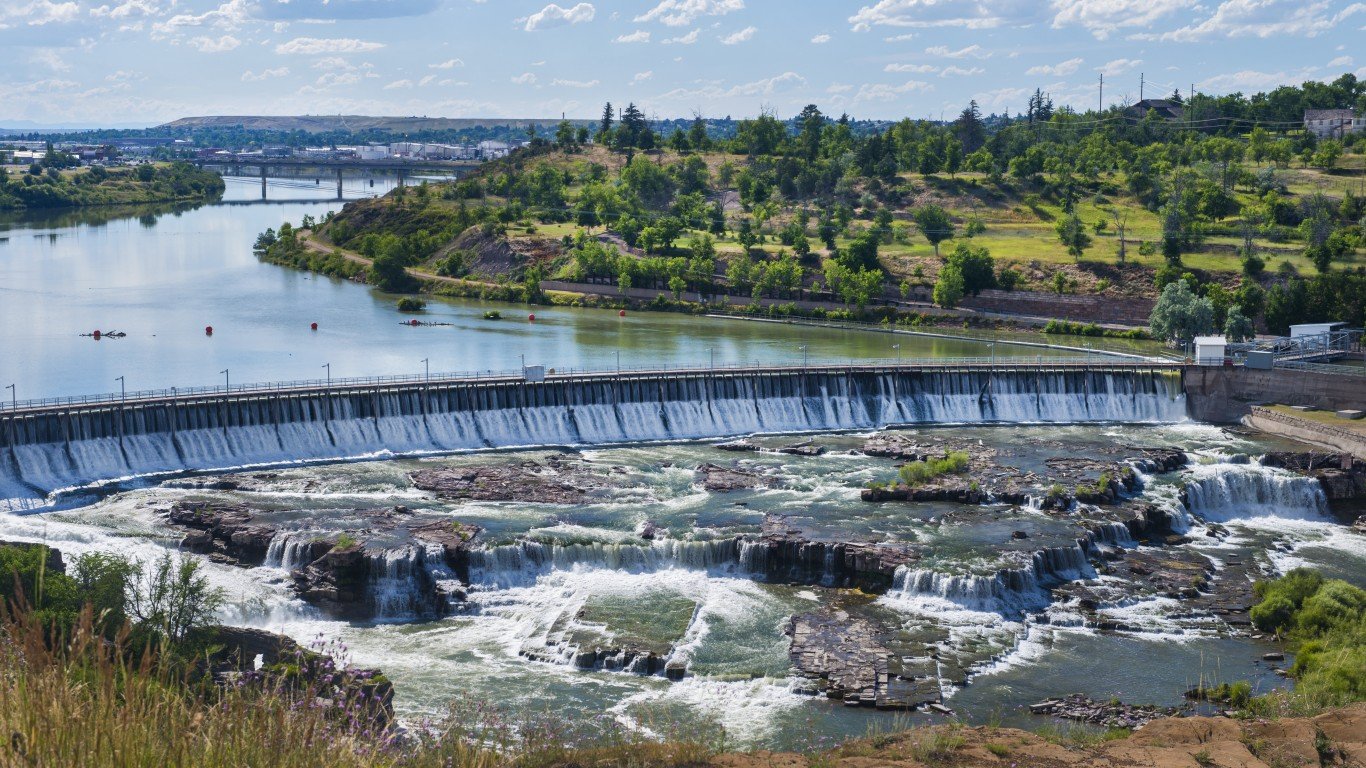
The town of Great Falls is named for the series of five waterfalls on the upper Missouri River in northern Montana. The town is known as a great place to start an outdoor adventure. It is close to the northern entrance of Yellowstone National Park and near an entrance to Glacier National Park.
Visitors come to Great Falls all year to enjoy nature and the area’s history. First People’s Buffalo Jump State Park is located near Great Falls, and it holds cultural significance as 13 indigenous tribes would gather and run the buffalo off the cliff so they could eat, clothe, and use the animals for teepee-making and other utilitarian ways. There is a site center and museum to learn more about this important practice and the First People of the region.
14. Gold, copper and silver
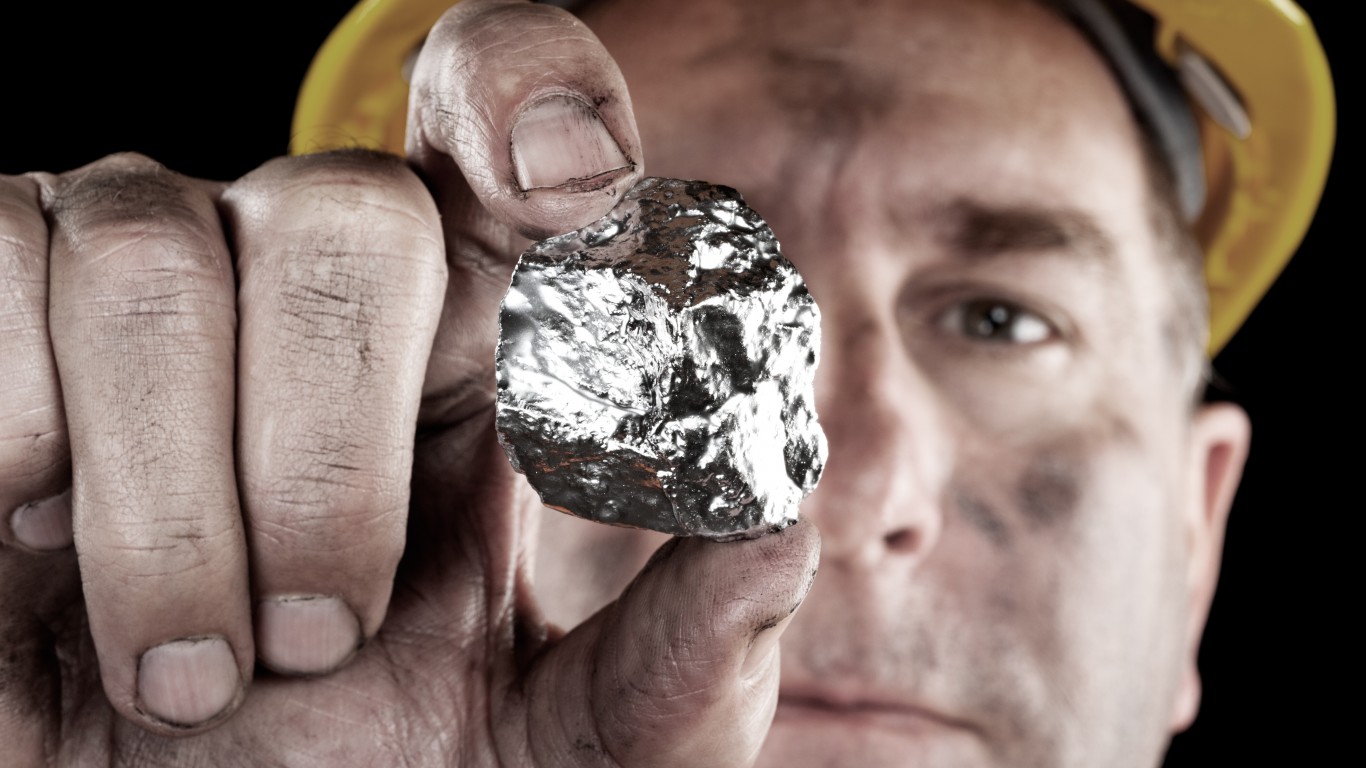
Mining for gold, silver, and copper was a big business in Montana in the 1800s. Small towns blew up overnight with prospectors looking to make their fortune. Some gold was found, but silver and copper were far more common.
Today, visitors can learn more about the rich history of mining in Montana at the World Museum of Mining in Butte. The museum offers underground tours and plenty of historical information about the industry. The museum site sits on one of the world’s most productive copper mines. It is the perfect place to soak up Montana’s unique mining history.
15. Ghost towns
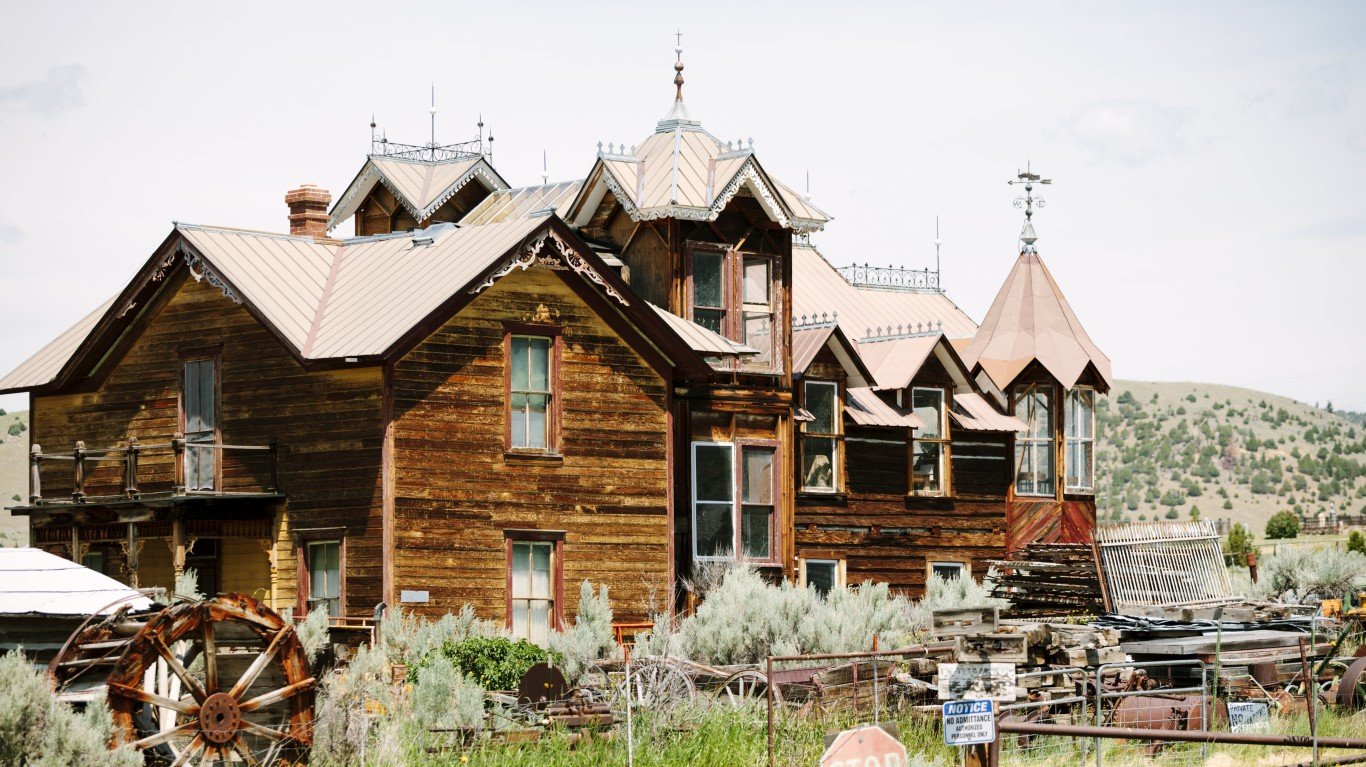
When the mining dried up, many towns turned into ghost towns, and they’re located throughout the state. Some are quite well preserved while others are shells of buildings, and many are said to be haunted. Most are open to the public. Visitors can wander around and get a sense of the history that remains in these old structures.
A noteworthy ghost town is Bannack State Park, where the old Hotel Meade is believed to be haunted by a young woman who drowned in 1916. Another is Virginia City, which is said to be haunted by a dark figure in a black robe. The figure is thought to be a nun who keeps watch on the long-ago emptied town.
If you like ghost stories and want to reimagine the life of prospectors, cowboys, and brothel workers, then visit these Montana ghost towns to see where the Wild West was formed.
16. Beartooth Highway
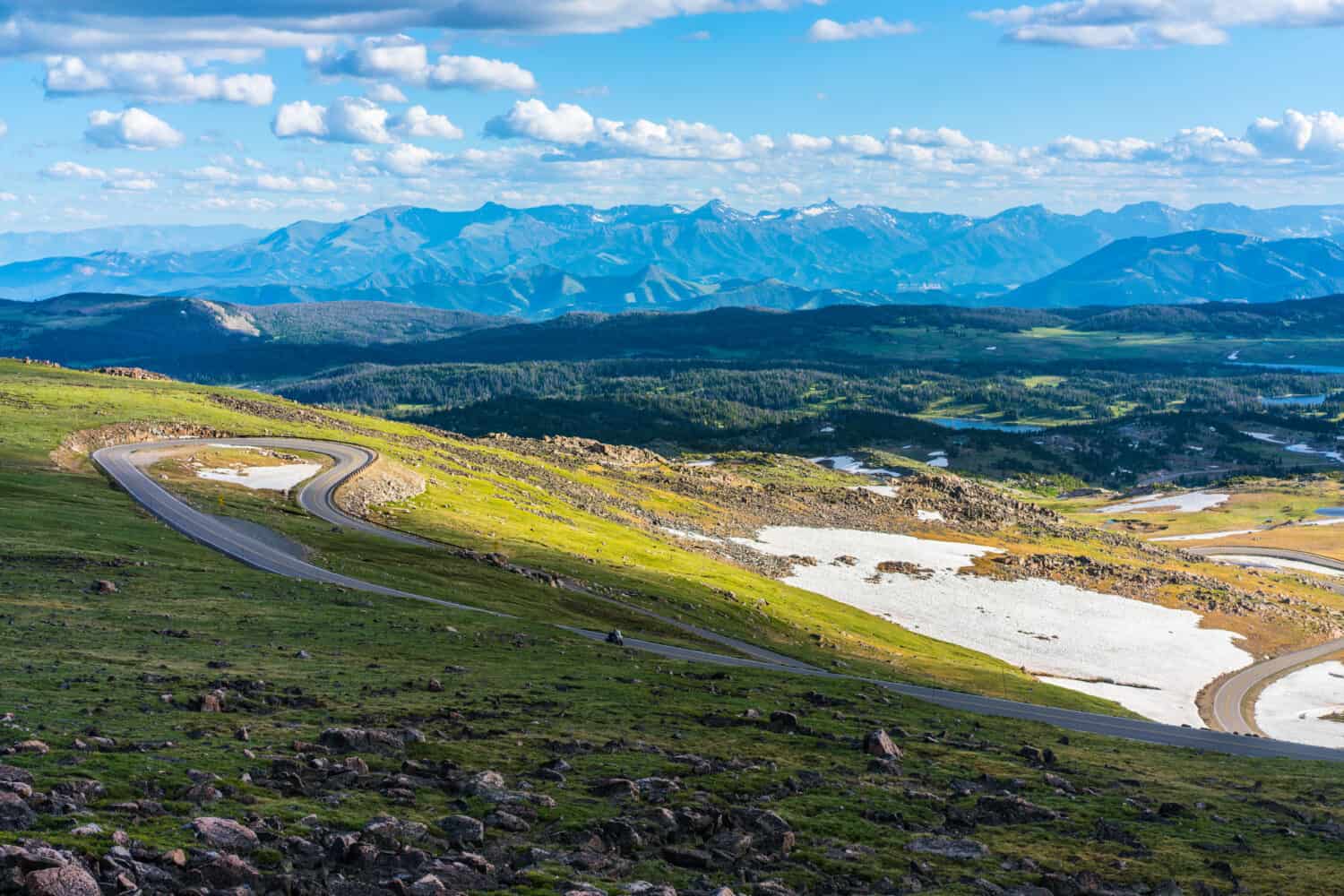
This 68-mile-long scenic highway runs from Red Lodge to Cooke City. It is considered one of the most beautiful drives in the U.S. The road winds through alpine lakes and jagged mountain peaks.
From the starting point of Red Lodge at 5,500 feet, the drive increases in elevation and climbs up to Beartooth Pass, where it is 10,947 feet. The road then slowly descends towards Cooke City. The drive takes roughly three hours, but plan for longer so you can stop and take photos. The road is only open from late May or early June to October.
17. Medicine Rocks State Park
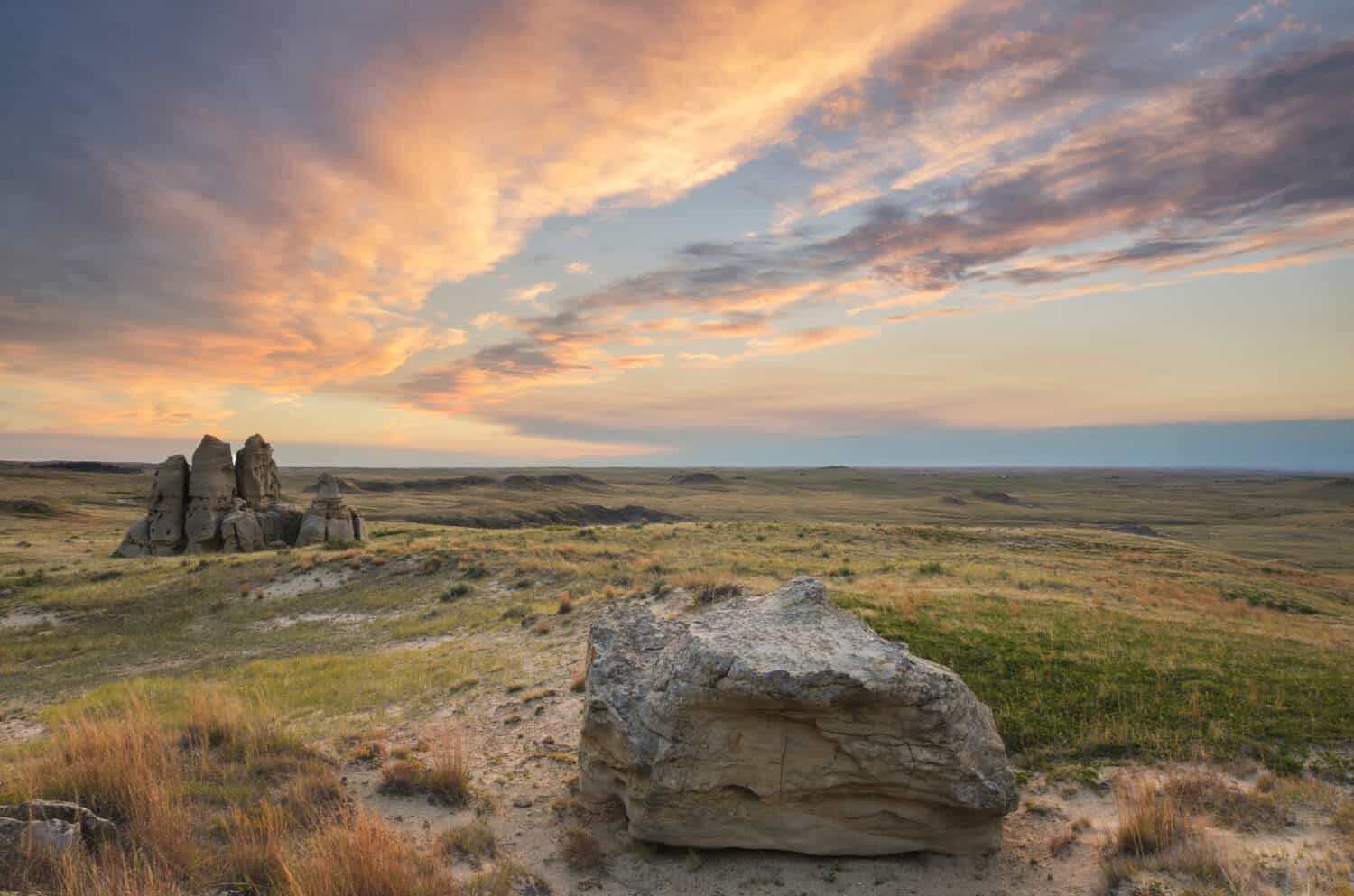
This 330-acre park is located in southwestern Montana located near the border with the Dakotas Medicine Rocks State Park. The park is a place where history, culture, and stunningly unique landscapes come together. It was considered a sacred magical place by the indigenous peoples who inhabited the land.
The rock formations look otherworldly, with interesting shapes that form caves and holes. These soft sandstone rock formations create a striking landscape, and visitors come to hike, camp, and explore the rich region.
18. Little Bighorn Battlefield National Monument
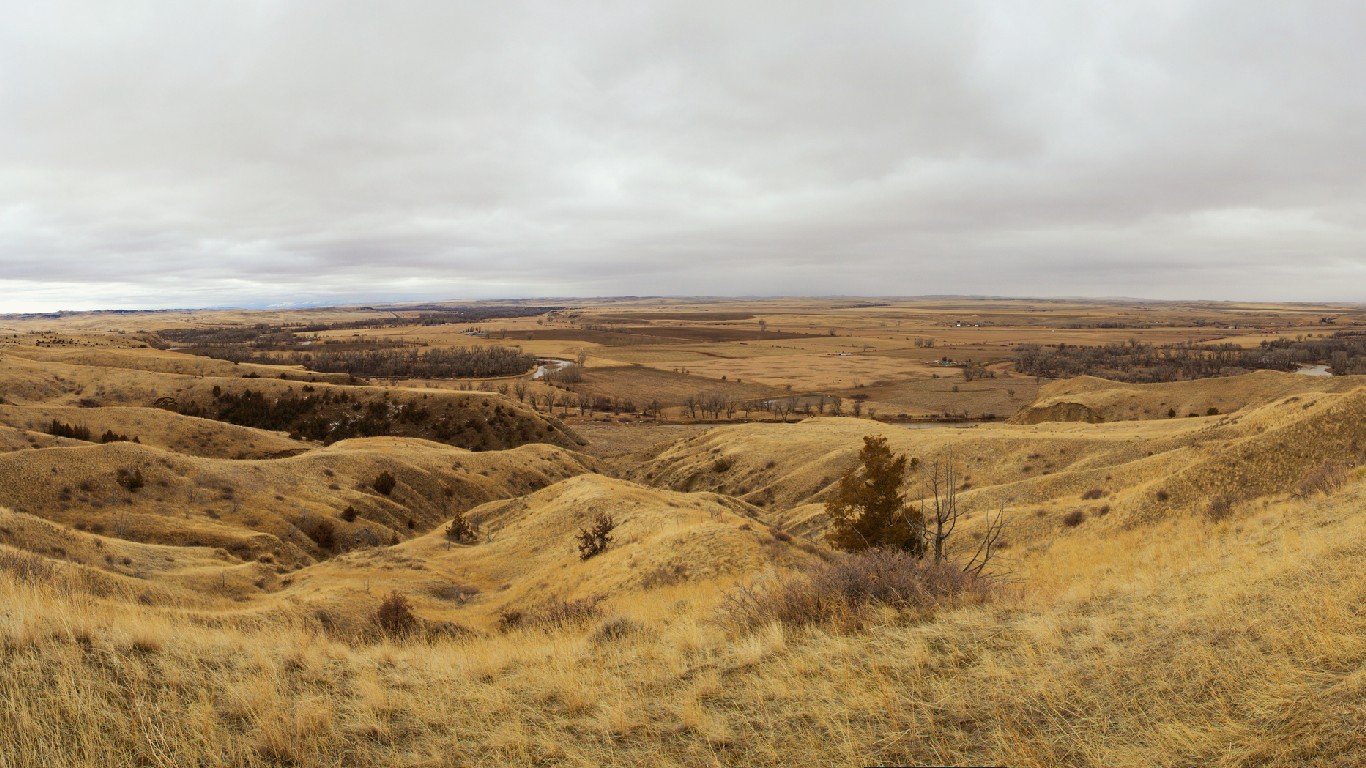
History buffs will want to see the Little Bighorn Battlefield National Monument in southern Montana. The monument commemorates the 1876 battle between General Custer and the brave Lakota, Cheyenne, and Arapaho warriors. The battle was the culmination of the efforts by the U.S. to push into indigenous lands and push the indigenous population onto reservations. General Custer famously lost the battle and his life along with those under his command.
The monument is a historical marker that symbolizes the loss of human life during this dark period of American history and the transformation of the Wild West and its inhabitants.
19. Garden of One Thousand Buddhas
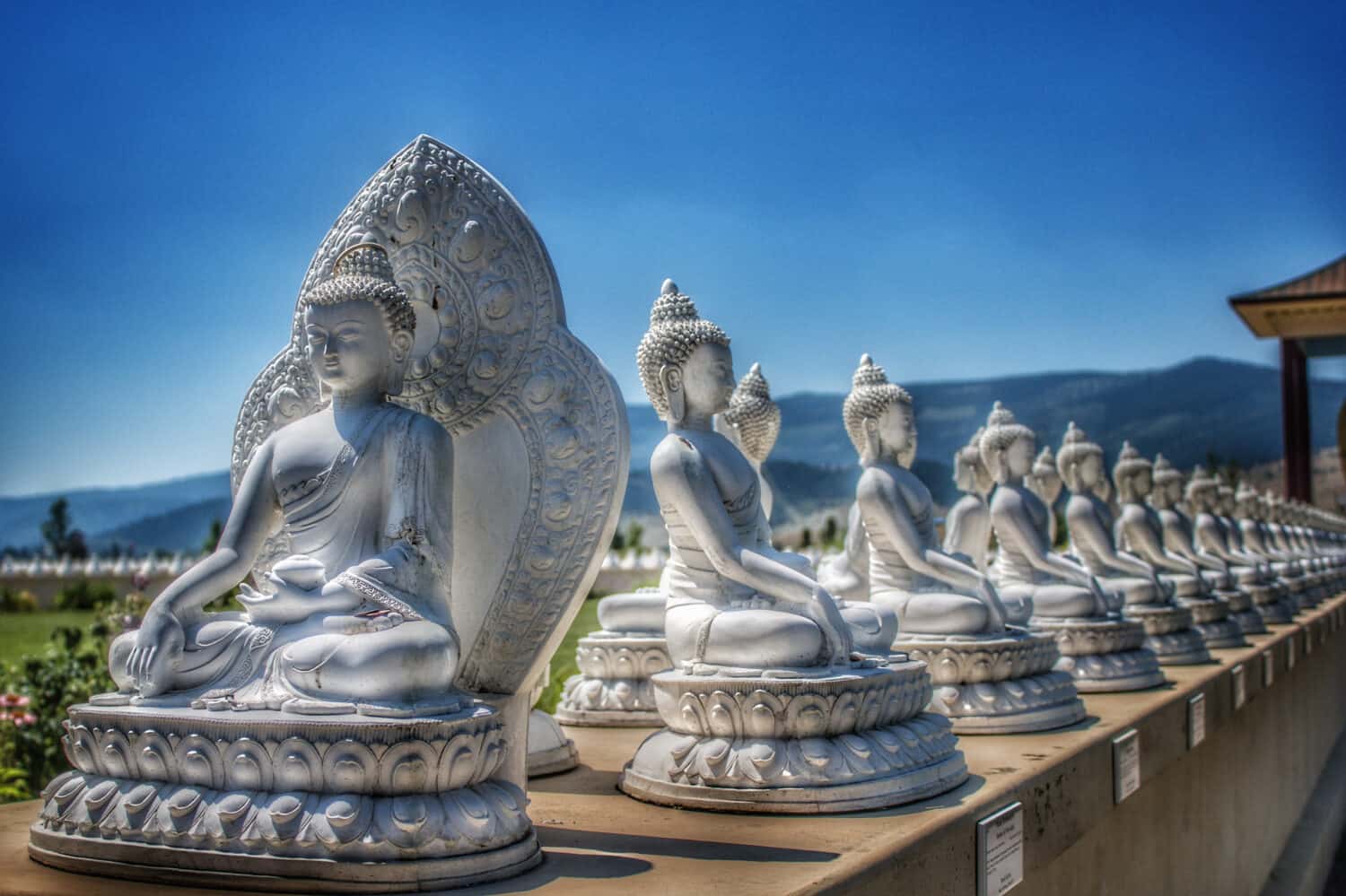
Near the town of Arlee, north of Missoula, on the Flathead Indian Reservation, is the spiritual center of the Garden of One Thousand Buddhas. The center is open to the public and serves as a park, botanical garden, and Buddhist retreat center. One thousand hand-cast Buddha statues decorate the landscape and garden. The garden has flowers, trees, and a koi pond, and is the perfect place to walk through or meditate. The park is a great place to stop on the way to Glacier National Park. It is also near some local hot springs.
The two best times to visit are in September when the center hosts the Festival of Peace, when people come from all over to celebrate peace, and in June for the annual Tibetan Culture Festival.
20. Miracle of America Museum
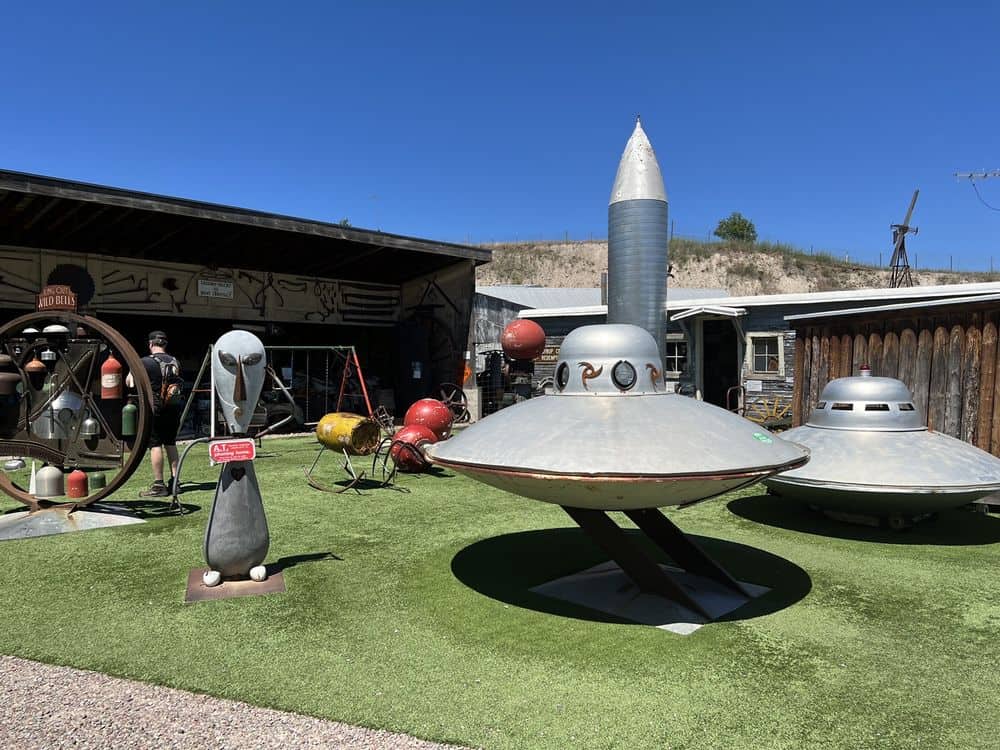
North of Missoula, on the south end of Flathead Lake, is one of the most eclectic museums in the United States, the Miracle of America Museum. The museum has everything from antique Victorian hair accessories to horse-drawn carriages to phonographs to Native American art to an intact covered wagon to an A-7D Corsair jet plane. There are so many things to see and explore. The entire museum takes up 35 buildings, so plan to have time to see it all.
The museum even has some interactive exhibits and kid-friendly displays like an Army jeep, a UFO, and a real Huey helicopter. The museum is a mix of historical and pop culture and has earned the nickname the Smithsonian of the West. (Learn 20 things Montana’s neighbor, Idaho, is known for.)
